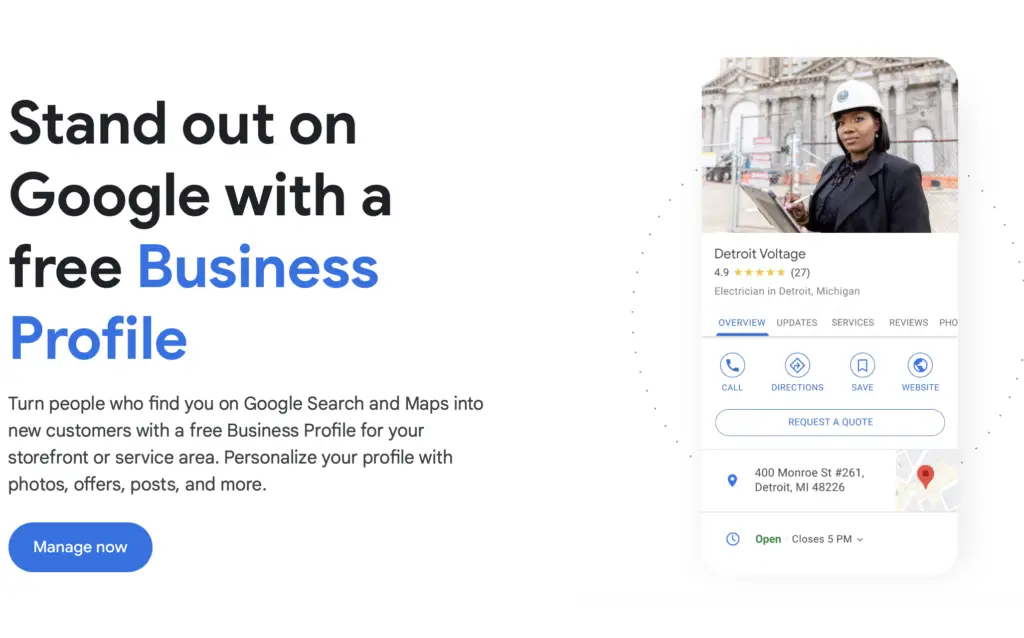SEO is a crucial aspect of digital marketing, as it enhances online visibility, establishes credibility, and drives organic traffic. By optimizing content and structure, a website can improve its ranking on search engines like Google, Bing, and Yahoo, thereby driving more organic traffic. SEO also contributes to establishing credibility and trustworthiness, as users trust the top results displayed by search engines. This trust can lead to higher click-through rates, longer browsing sessions, and more conversions.
Targeted marketing efforts are also made easier by optimizing websites for specific keywords related to your services or products. This targeted traffic is more likely to convert into leads or customers, as they already have a vested interest in your offerings. SEO also provides valuable insights into user behavior, allowing businesses to track metrics like traffic sources, user engagement, and conversion rates. By continuously analyzing and refining SEO tactics, businesses can stay ahead of the competition and adapt to evolving search engine algorithms and user behaviors.
Keyword Research
Identify the keywords potential clients are likely to use when searching. Use tools like Google Keyword Planner or Ahrefs to find relevant terms related to your services and location.
Keyword research lies at the heart of effective SEO strategy, serving as the compass that guides your website towards the right audience. It helps identify the most frequently used terms by your target audience, whether they’re searching for remote services or web developers. This ensures your messaging aligns with their language and intent, optimizing your website’s content and marketing plan. By leveraging tools like Google Keyword Planner or Ahrefs, you gain invaluable insights into search volume, competition, and related keywords, enabling you to refine your targeting and capture relevant traffic.
Optimize Title Tags and Meta Descriptions
Ensure page titles and meta descriptions are descriptive and include your target keywords. This information is displayed in search engine results, so make it engaging to encourage clicks.
Optimizing title tags and meta descriptions is similar to crafting the cover of a book – it’s the first impression users have of your webpage on search engine results pages (SERPs). These elements not only communicate the relevance of your content to search engines but also entice users to click through to your website. By ensuring that your page titles and meta descriptions are descriptive and include your target keywords, you increase the likelihood of your website appearing for relevant search queries. Moreover, incorporating compelling language and calls-to-action into your meta descriptions can further enhance click-through rates, enticing users to choose your link over competitors’.
Since title tags and meta descriptions are the gateway to your website, it’s crucial to make them as engaging and informative as possible. This not only improves website visibility but also increases the likelihood of attracting qualified traffic, driving conversions and achieving business goals.
Header Tag
Structure your content with header tags (H1, H2, H3, etc.). Use your main keyword in the H1 tag and variations of it in other headings.
Header tags play a crucial role in organizing and structuring your content for both users and search engines. By utilizing header tags such as H1, H2, and H3, you create a hierarchy that guides readers through your content while signaling its relevance to search engines. Incorporating your main keyword into the H1 tag helps search engines understand the primary focus of your page, while using variations of it in subsequent headings reinforces the thematic relevance of your content. This strategic use of header tags not only enhances the readability and user experience of your website but also improves its SEO by signaling the importance of key topics to search engines.
Mobile-Friendliness
A mobile-friendly website improves usability, readability, and navigation, boosting user engagement, longer dwell times, and lower bounce rates, while adhering to search engine standards.
In today’s digital era, a website’s mobile-friendliness stands as a linchpin for success. Search engines prioritize sites optimized for mobile devices to ensure users receive the utmost in user experience. A responsive website seamlessly adjusts to various screen sizes and devices, catering not only to the needs of mobile users but also amplifying its chances of securing higher rankings in mobile search results. Beyond mere compliance with search engine standards, mobile-friendliness profoundly enhances usability, readability, and navigation on smaller screens. This improvement leads to heightened user engagement, prolonged dwell times, and diminished bounce rates. By giving precedence to mobile-friendliness in both website design and optimization strategies, one not only aligns with search engine requirements but also elevates the overall user experience, resulting in heightened traffic and increased conversions.

Content Quality
Create valuable and relevant content related to your services and expertise. This could include blog posts, case studies, and projects showcasing your skills and knowledge.
Creating high-quality content is essential for establishing your authority and credibility in your field as a freelancer. By producing valuable and relevant content such as blog posts, case studies, and project showcases, you demonstrate your expertise and provide tangible examples of your skills to potential clients. Blog posts allow you to share insights, tips, and industry updates, positioning you as a thought leader and attracting organic traffic through search engines. Similarly, case studies and project showcases serve as powerful testimonials of your capabilities, showcasing your ability to deliver results and solve clients’ problems effectively.
By consistently delivering valuable content that resonates with your target audience, you not only engage visitors and keep them on your website longer but also improve your website’s SEO by signaling its relevance and authority to search engines. This, in turn, can lead to increased visibility, higher search engine rankings, and ultimately, more opportunities to attract and convert clients.
URL Structure
Keep URLs simple, clean, and keyword-focused. Avoid long strings of numbers or symbols.
For the benefit of search engine optimization as well as user experience, URL structures ought to be kept simple and uncluttered. By keeping URLs simple, descriptive, and keyword-focused, you provide users and search engines with clear signals about the content of your web pages. Avoiding long strings of numbers or symbols helps improve readability and makes it easier for users to understand the relevance of the page before clicking on it in search results.
Additionally, incorporating relevant keywords into your URLs can further enhance their SEO value, as search engines use URLs as a ranking factor when determining the relevance of a page to a user’s query. When search engines crawl your website, they analyze the URL structure to determine the context and relevance of each page. By adhering to best practices you can enhance your website’s SEO performance and increase the likelihood of attracting organic traffic from users searching for relevant keywords or topics.
Internal Linking
Use internal links to guide users through your website and help search engines understand your site’s structure.
Internal linking plays a dual role in enhancing user experience and improving SEO. By strategically incorporating internal links throughout your website, you guide users to relevant content and encourage them to explore further. This not only keeps visitors engaged and on your site longer but also helps establish a logical hierarchy and flow of information, making it easier for users to navigate and find what they’re looking for. Additionally, internal linking provides search engines with valuable insights into your site’s structure and content hierarchy, enabling them to crawl and index your pages more efficiently.
Overall, strategic internal linking not only enhances user experience but also strengthens your website’s SEO by providing both users and search engines with clear pathways to navigate and understand your site’s content and structure.
Image Optimization
Image optimization ensures that your website remains fast, accessible, and search engine-friendly. By implementing best practices such as compressing images and using descriptive file names and alt text, you enhance both user experience and SEO.

Image optimization is a crucial aspect of website performance and SEO. By compressing images, you reduce file sizes and improve loading times, which is essential for providing a seamless user experience and reducing bounce rates. Additionally, using descriptive file names and alt text not only improves accessibility for visually impaired users but also provides valuable context to search engines, helping them understand the content and relevance of your images. Including relevant keywords in alt text can further enhance your website’s SEO by providing additional opportunities for optimization and improving the likelihood of your images appearing in image search results.
Site Speed
Optimizing your website’s loading speed is crucial for a better user experience and SEO performance. In addition to image compression use techniques like browser caching and minifying CSS & JavaScript to reduce data transfer.
By leveraging techniques such as browser caching and minifying CSS and JavaScript, you reduce the amount of data that needs to be transferred between the server and the user’s browser, resulting in faster page load times. Browser caching allows elements of your website to be stored locally on a user’s device, reducing the need to fetch resources repeatedly, while minifying CSS and JavaScript files removes unnecessary characters and whitespace, streamlining their delivery to the browser.
Ensuring that your website loads quickly not only enhances user satisfaction but also positively impacts its search engine rankings. Site speed is a key factor in search engine algorithms, with faster-loading sites typically receiving preferential treatment in search results. By optimizing your website’s loading speed through techniques like browser caching and minification, you create a smoother and more efficient browsing experience for users while signaling to search engines that your site is well-maintained and user-friendly, ultimately improving its visibility and performance in search engine results pages.
Backlinks
Seek backlinks from reputable websites in your industry. This can improve your domain authority and search engine rankings.
Acquiring backlinks from reputable websites within your industry is a cornerstone of effective SEO strategy. These inbound links serve as a vote of confidence in your website’s authority and relevance, signaling to search engines that your content is trustworthy and valuable. By seeking out backlinks from high-quality sources, you not only enhance your website’s domain authority but also improve its search engine rankings. Search engines prioritize websites with a strong backlink profile, considering them more authoritative and relevant to users’ search queries.
Furthermore, backlinks play a crucial role in expanding your online presence and driving targeted traffic to your website. When reputable websites link to your content, they expose their audience to your brand, increasing visibility and potentially attracting new visitors. Additionally, backlinks from relevant and authoritative sources can lead to higher levels of engagement and conversions, as users are more likely to trust and explore content recommended by trusted sources within their industry. Therefore, actively seeking backlinks from reputable websites is essential for bolstering your website’s SEO performance and establishing your authority within your niche.
Local SEO
If you want to target local clients, set up a Google My Business profile and encourage clients to leave reviews.
For targeting local clients, setting up a Google My Business profile is a must-have. It ensures your business appears in local search results and on Google Maps, making it easier for nearby customers to find you. Additionally, encouraging satisfied clients to leave reviews on your Google My Business profile can significantly enhance your local SEO efforts. Positive reviews not only improve your visibility but also build trust and credibility with potential local clients, increasing the likelihood of them choosing your services over competitors’.

Bonus tip: You can use Localboss to follow up on and improve your google ratings.
Social Media Integration
Share your content on social media platforms and include links back to your website. This can drive traffic and improve your online presence.
Integrating social media into your online strategy is key for driving traffic and expanding your online presence. By sharing your website content on platforms like Facebook, Twitter, and LinkedIn, you reach a wider audience and encourage engagement with your brand. Including links back to your website in your social media posts not only directs followers to your site but also boosts its visibility and authority, as social signals are increasingly factored into search engine algorithms. With social media integration, you can foster meaningful connections with your audience, drive website traffic, and strengthen your online presence effectively.
Track and Analyze
Use tools like Google Analytics and Google Search Console to monitor your website’s performance and make data-driven decisions.
Utilizing tools such as Google Analytics and Google Search Console empowers you to track and analyze your website’s performance effectively. By monitoring key metrics like website traffic, user engagement, and conversion rates, you gain valuable insights into how visitors interact with your site. This data allows you to identify strengths and weaknesses, pinpoint areas for improvement, and make informed decisions to optimize your website for better results. By leveraging data-driven insights, you can refine your strategies, enhance user experience, and ultimately achieve your goals more efficiently.

Stay updated with SEO best practices, as search engine algorithms change frequently. By implementing these strategies, you can enhance your website’s SEO and attract more clients to your business.
